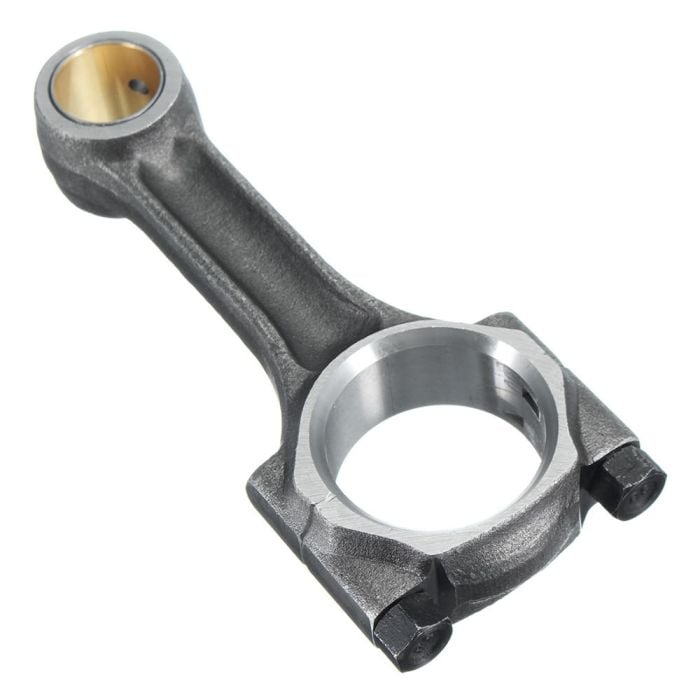Find a cost-effective clp engine for industrial applications.
Find a cost-effective clp engine for industrial applications.
Blog Article
The Duty of a Clp Engine in Revolutionizing Engine Performance and Sustainability
The introduction of CLP engine innovation presents a zero hour in the vehicle industry, where efficiency and sustainability merge in extraordinary means. By enhancing combustion processes and enabling vibrant changes in compression ratios, these engines not only promise improved gas performance and reduced discharges however also challenge standard engineering paradigms. As the industry grapples with journalism demand for greener services, the implications of adopting CLP innovation extend far beyond mere efficiency metrics. What remains to be seen is how these developments will reshape the future landscape of automobile engineering and ecological duty.
Understanding CLP Engine Technology
As the vehicle sector continually seeks cutting-edge solutions to enhance effectiveness and efficiency, recognizing CLP engine innovation becomes crucial. The term CLP stands for Compression-Low Stress, a sophisticated engine style that concentrates on maximizing combustion processes and reducing exhausts. This innovation runs by keeping a low-pressure atmosphere within the combustion chamber, which facilitates a much more full fuel shed and lessens unburned hydrocarbons.
Among the key functions of CLP engine technology is its capacity to change the compression proportion dynamically. This versatility enables the engine to operate successfully throughout different driving conditions, boosting fuel economy while concurrently improving power result. Furthermore, CLP engines utilize progressed materials and layout principles to decrease weight and thermal losses, even more adding to total efficiency.
Additionally, the assimilation of digital control systems plays an essential role in managing the engine's performance criteria. These systems enable real-time adjustments to ignition timing and gas injection, maximizing burning for both power and efficiency. By understanding CLP engine modern technology, stakeholders in the automotive field can much better value its potential in driving the future of engine style, efficiency, and sustainability.
Performance Enhancements Offered
CLP engine modern technology provides considerable efficiency enhancements that establish it aside from typical engine designs. One of the main advantages of CLP engines is their capacity to run effectively across a more comprehensive variety of rates and loads. This adaptability translates right into improved torque distribution and velocity, giving a more receptive driving experience.
Additionally, the innovative burning procedure utilized in CLP engines maximizes fuel-air blending, causing higher thermal effectiveness. This enhancement not just makes the most of power output but additionally minimizes power loss, resulting in an engine that carries out far better under various problems.
Furthermore, the modular design of CLP engines enables simpler integration with hybrid systems, amplifying their performance potential - clp engine. This flexibility enables suppliers to make cars that satisfy customer demands without sacrificing agility or power
The accuracy design included in CLP technology likewise contributes to reduce rubbing and wear, boosting engine durability and minimizing the regularity of upkeep. Overall, these efficiency enhancements position CLP engines as a leading choice in the search of high-performance, reputable, and versatile engine solutions.
Environmental Benefits of CLP Engines
One of the most engaging advantages of CLP engines lies in their ecological advantages, which are significantly important in today's automobile landscape. These engines are developed to maximize fuel effectiveness, dramatically lowering carbon emissions contrasted to conventional combustion engines. By making use of sophisticated combustion techniques here are the findings and cutting-edge products, CLP engines promote cleaner exhaust outputs, adding to enhanced air high quality.
Additionally, the decrease in gas consumption not only causes lower greenhouse gas discharges but additionally conserves useful all-natural resources. As nonrenewable fuel source books dwindle, the shift in the direction of CLP technology represents a critical relocation in why not check here the direction of sustainability. The engines are typically compatible with alternative gas, additionally boosting their ecological appeal and enabling a varied energy portfolio.
In addition, the light-weight style of CLP engines assists lower lorry weight, which in turn reduces the energy needed for propulsion. This results in lower functional energy usage and a minimized ecological footprint. In recap, CLP engines stand at the center of initiatives to reduce environment adjustment and promote sustainable techniques in the vehicle sector, personifying a future where performance and ecological responsibility are not equally special.
Contrast With Typical Engines
While traditional engines have lengthy controlled the automobile sector, the introduction of CLP innovation presents a significant change in efficiency and performance. Conventional interior burning engines mostly depend on fuel burning, which not only restricts thermal performance however also adds to higher discharges. In comparison, CLP engines employ innovative thermal monitoring and a special burning process, improving fuel performance and significantly lowering greenhouse gas emissions.
Furthermore, typical engines operate on fixed power curves, which can impede performance in varying driving conditions. CLP engines, however, are created to adapt their performance dynamically, supplying optimal power distribution based upon real-time demands. This versatility leads to boosted velocity, responsiveness, and general driving experience.
Maintenance likewise differs considerably; traditional engines typically need constant oil adjustments and part replacements due to deterioration. clp engine. CLP engines, with fewer moving parts, guarantee decreased maintenance demands and longer functional life-spans

Future Leads and Innovations
As the auto landscape evolves, the future of engine innovation is significantly concentrated on innovations that boost efficiency and sustainability. The Clp engine, with its special architecture and functional performances, is poised to play a pivotal function in this makeover. Future advancements may include advancements in materials scientific research, allowing the building and construction of lighter and more resilient elements, hence reducing overall lorry weight and enhancing fuel effectiveness.
Moreover, the integration of expert system and device understanding into engine management systems is anticipated to maximize efficiency dynamically, permitting real-time adjustments based discover this upon driving conditions. These developments can better lessen discharges and boost energy use.
Furthermore, research into alternate gas, consisting of hydrogen and biofuels, offers amazing opportunities for Clp engines, aligning performance with eco-friendly campaigns. clp engine. As governing frameworks become stricter, the fostering of such innovations will certainly be vital in achieving sustainability objectives without compromising power
Final Thought

Report this page